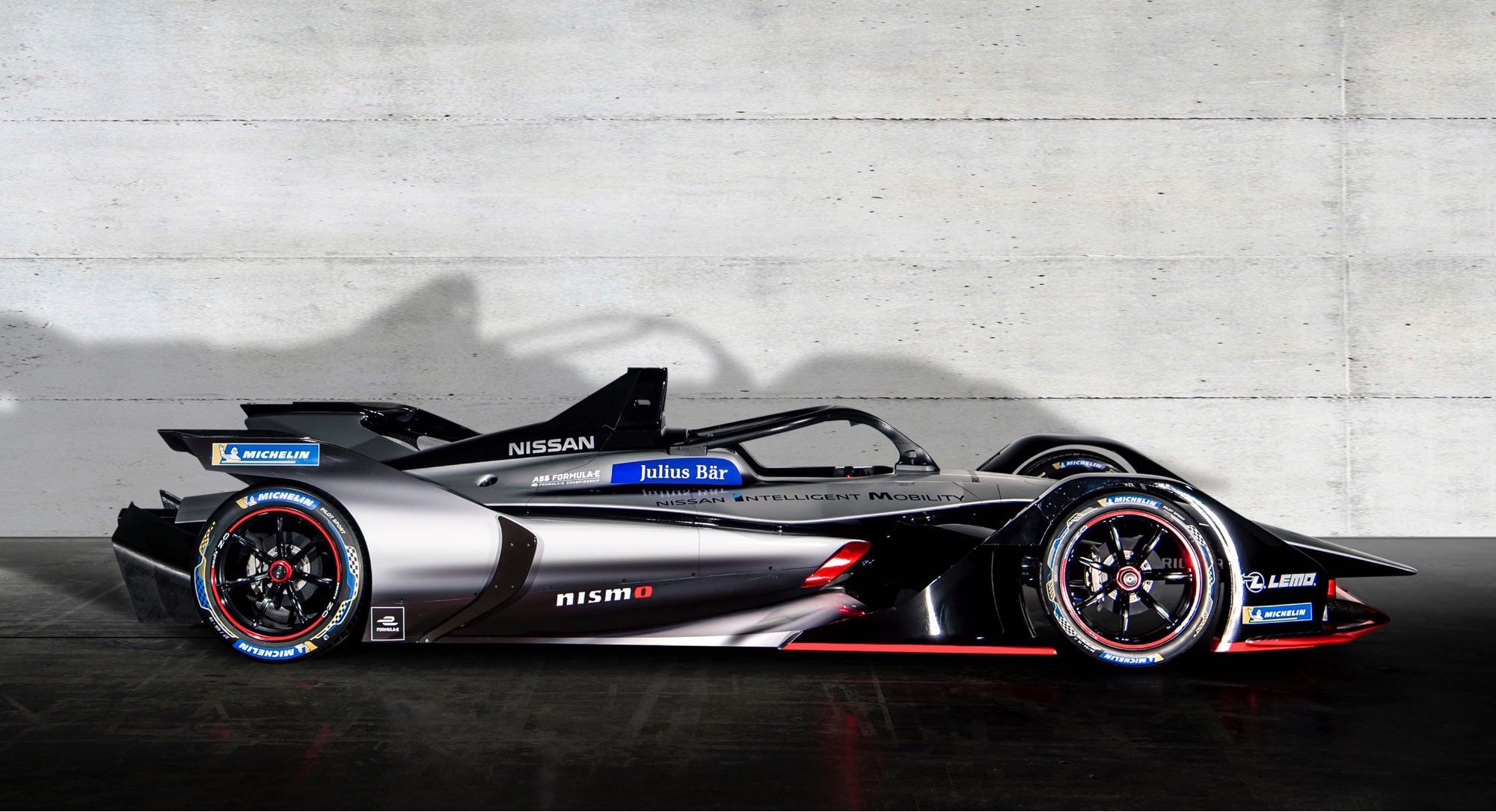If Malcolm Gladwell did motorsport commentary, he’d likely say Formula E was approaching its tipping point. The four-year-old series—in which purpose-built, all-electric race cars scream around diabolically tight courses often carved from a city’s own streets—has many things breaking in its favor. One, it has lured some of the most prestigious car brands on Earth. Two, it has secured a multiyear title sponsor, ABB, a Swiss builder of robotic systems. Three, it continues to cultivate strong driver talent.
Also, man, have you seen the new car?
Indeed, the 2018/19 season could mark the inflection point at which Formula E graduates from the experimental music tent to the main stage—and not just in audience terms. Once the province of electric-vehicle component suppliers and a few intrepid, early-adopter automakers, the series has since on-boarded the likes of Jaguar, BMW, and Mercedes-Benz, with more manufacturers being announced every few months. (That’s to make no mention of the star power; celebrity team owners include Leonardo DiCaprio and Richard Branson.)
With global consensus growing around electrification and battery power as a viable replacement for internal combustion, Formula E can already claim to be the most future-forward motorsport series. Given a few more years to mature, however, and it may legitimately threaten Formula 1—its closest analog, and a decidedly carbon-belching one—as the world’s premier plutocratic spectacle on wheels.
Not only is Formula E coming for Formula 1’s excitement, but also for its yacht slips in Abu Dhabi, magnums of Mumm, and impeccable haircuts. The electric series will even race through the streets of Monaco next year. Consider that a bold statement of intent: Monte Carlo is the crown jewel of the Formula 1 schedule, and Formula E is mounting an electron-fueled heist.
A number of confluences, some expected, others not, have led Formula E to this point. The biggest shock has been the addition of Audi and Porsche, both brands having announced their race entries simultaneously with withdrawals from Le Mans prototype racing. With class victories at 10 of the past 11 runnings of the eponymous 24-hour endurance race in the French countryside, the German manufacturers’ sudden pivots have been viewed by some pundits as tactical—and less charitably, cynical—chess moves.
After all, Volkswagen Group, the corporate parent of Audi and Porsche, was caught in 2015 cheating on diesel-engine emissions tests, leading to billions in fines and a cascade of indictments. Even without that stain, skeptics can deride the involvement of Porsche, Audi, and others in Formula E as tantamount to greenwashing: a way to launder profits derived from gas-guzzling SUVs and sports cars in a virtuous spin cycle.
Even a jaundiced eye can’t help but twinkle, though, when the Gen2 car enters into view. Wholly redesigned for the 2018/19 season kicking off in the fall, the second generation of Formula E’s race car debuted at the Geneva Motor Salon. As a so-called “one-make” race series, Formula E dictates that all teams use this chassis, and the response from insiders and social media gawkers alike has been overwhelmingly positive.
“At first glance, the season five Formula E car looked to our design team like an EV-powered supersonic bird in flight,” says Alfonso Albaisa, Nissan’s senior vice president of global design. The Japanese automaker, another new entrant, hasn’t participated in top-tier racing since its calamitous attempt to run a prototype racer for Le Mans. The car was uncompetitive, and its design was heavily criticized. For Nissan, like Porsche and Audi, the foray into Formula E represents something of a fresh start.
To that end, next season got off to an auspicious beginning, as Albaisa’s “Doppler effect” paint scheme for the Nissan car was met with acclaim. Armchair engineers will note the slippery lines of the chassis underneath, an inheritance from endless wind-tunnel work; design pundits will appreciate the clever use of color, emphasizing the body’s various convex and concave surfaces. Fans will just think it looks damn good. Formula E could always claim it was the most future-forward race series. Now it has a strong claim to being the most beautiful, too.

